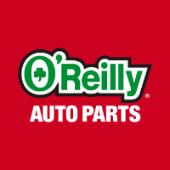-
Welcome to Auto Parts Forum
Whether you are a veteran automotive parts guru or just someone looking for some quick auto parts advice, register today and start a new topic in our forum. Registration is free and you can even sign up with social network platforms such as Facebook, X, and LinkedIn.
Ignition Lock Cylinder Replacement (GM cars w PASSkey theft systems)
-
Similar Content
-
- 0 replies
- 68 views
-
- 0 replies
- 179 views
-
- 0 replies
- 159 views
-
- 0 replies
- 173 views
-
- 0 replies
- 167 views
-
-
Similar Topics
-
By Clifford Auto Parts
Your car’s control module is one of the most important components in ensuring a smooth and efficient ride. Whether it’s an Engine Control Module (ECM), Powertrain Control Module (PCM), or Transmission Control Module (TCM), these electronic units play a crucial role in regulating engine performance, fuel efficiency, and transmission behavior.
At Clifford Auto Parts, we specialize in providing OEM control modules that guarantee compatibility, reliability, and long-term performance. But how do you know when it’s time to replace your control module? Let’s break it down!
✅ What Is a Control Module and What Does It Do?
A control module is an onboard computer that processes data from various sensors in your car and makes real-time adjustments to optimize performance. Some of the most common control modules include:
✔️ Engine Control Module (ECM) – Controls ignition timing, fuel injection, and emissions.
✔️ Powertrain Control Module (PCM) – Manages both engine and transmission functions.
✔️ Transmission Control Module (TCM) – Regulates gear shifting and transmission efficiency.
✔️ Body Control Module (BCM) – Handles electrical functions such as lighting, locks, and windows.
When these modules start to fail, your car may experience serious performance issues that could lead to costly repairs.
✅ Signs of a Failing Control Module
If your control module is going bad, your car will usually give you warning signs. Here are the top indicators that it may be time for a replacement:
🚨 Check Engine Light Stays On
If your Check Engine Light won’t turn off even after repairs, it could be due to a failing ECM or PCM.
🚨 Poor Fuel Efficiency
A malfunctioning control module may send incorrect signals, leading to excess fuel consumption and reduced mileage.
🚨 Difficulty Starting the Car
If your car struggles to start, the ECM might not be properly managing the fuel and ignition system.
🚨 Transmission Issues
A faulty PCM or TCM can cause hard shifting, gear slipping, or delayed acceleration.
🚨 Engine Stalling or Misfiring
A failing ECM can result in irregular combustion cycles, leading to stalling, misfires, and sluggish performance.
🚨 Electrical Malfunctions
The BCM controls many electronic functions, so if your power windows, locks, or headlights start acting up, it may be time for a replacement.
✅ What Causes Control Modules to Fail?
Several factors can lead to a control module failure, including:
🔥 Water or Moisture Damage – Exposure to moisture can corrode internal circuits.
⚡ Voltage Surges – A faulty alternator or battery can overload the control module.
🔧 Worn-Out Components – Over time, electronic components degrade, leading to failure.
💥 Physical Damage – Accidents or engine overheating can cause module failure.
If you’re experiencing any of these issues, replacing your control module can prevent further damage and restore your vehicle’s performance.
✅ Why Choose an OEM Control Module Over Aftermarket?
When replacing a control module, you have two options: OEM (Original Equipment Manufacturer) or Aftermarket. Here’s why OEM control modules are the best choice:
✔️ Guaranteed Compatibility – Designed specifically for your vehicle’s make and model.
✔️ Pre-Programmed for Plug-and-Play Use – No extra programming needed.
✔️ Factory-Tested for Reliability – OEM parts undergo rigorous quality checks.
✔️ Maintains Vehicle Warranty – Aftermarket parts may void manufacturer warranties.
✔️ Longer Lifespan – OEM modules are built to last, unlike some aftermarket options.
✅ Why Buy OEM Control Modules from Clifford Auto Parts?
At Clifford Auto Parts, we provide high-quality OEM control modules at unbeatable prices. Here’s why thousands of vehicle owners trust us:
✔️ OEM-Grade Control Modules for Ford, Dodge, Jeep, and More
✔️ Pre-Programmed & Ready to Install – No Dealership Required
✔️ Lifetime Warranty on ECM, PCM, and TCM Replacements
✔️ Fast & Free Nationwide Shipping – Receive Your Part in 3 Business Days
✔️ Expert Customer Support to Help You Find the Right Module
🚗 Looking for a replacement control module? Shop now at link hidden, please login to view and get back on the road with confidence!
✅ How to Install Your New Control Module
1️⃣ Disconnect the Battery – Prevents electrical damage.
2️⃣ Locate the Module – Found under the hood, near the firewall, or in the cabin.
3️⃣ Remove the Old Module – Carefully disconnect all wiring and mounting bolts.
4️⃣ Install the New OEM Module – Secure it and reconnect wiring.
5️⃣ Test Your Vehicle – Start your car and check for warning lights or error codes.
📌 Need help finding the right part? Call (516) 494-7838 for expert assistance!
✅ Final Thoughts: Get the Right Control Module for Your Car
A failing control module can cause engine trouble, transmission problems, and electrical failures—but replacing it with an OEM module ensures long-term reliability, compatibility, and optimal performance.
🔧 Don’t let a bad control module ruin your driving experience! Get a high-quality replacement today at link hidden, please login to view 🔧
📞 Have questions? Call (516) 494-7838 for expert support.
🚀 Fast Shipping – Lifetime Warranty – 100% Customer Satisfaction! 🚀
-
-
By Counterman
The standard automotive powertrain for the majority of the 20th century was the front engine, rear-wheel-drive (RWD) design. The rear axle assembly housed the differential and individual axles, and it is through this assembly that power was transferred to the wheels.
Even though both front-wheel-drive (FWD) and four-wheel-drive (4WD) cars were also designed and manufactured during the early years of the automobile, they didn’t flourish and the durability and simplicity of the typical RWD design made it the sole choice of automobile platforms for many manufacturers.
In a typical RWD vehicle, the power generated by the engine is transferred through the transmission to the driveshaft, differential and axles to the rear wheels. In a typical 4WD vehicle, a differential/axle assembly is located at the front of the vehicle, and to transfer power to the front, a transfer case is also installed after the transmission and a short driveshaft is installed between the transfer case and front axle.
You will also notice that the front differential/axle assembly is different in two ways. One, the differential location is offset for clearance since the engines were always mounted in the center and, two, since the front wheels must turn to steer the vehicle, the axles must have some type of articulating joint at the end, the most common of which is the traditional Universal Joint (U-Joint.)
The transfer case transfers the power that exits the transmission to either the rear wheels (RWD), or the front and rear wheels at the same time (4WD.) Another feature of a traditional transfer case is that it offers both high and low ranges in either RWD or 4WD positions, as well as a neutral position. This is so that if the vehicle must overcome particularly difficult terrain, it can be placed in the low range so the engine will operate at a higher RPM to provide additional torque to the wheels. The high range is 1:1, which means the output speed of the transfer case is the output speed of the transmission. The low range ratio varies depending on manufacturer.
An important aspect of all this is differential operation. The differential itself transfers the power from the driveshaft to the axles, and it is necessary because it allows power to be transferred to the wheels, but also allows them to travel at different speeds when turning a corner. A conventional differential is considered an “open” design. An operating characteristic of an open differential is that it transfers power to the wheel that spins the easiest.
As an example, if one wheel is on ice, that wheel will spin, resulting in minimal traction. The same affect is what causes a car under heavy acceleration to “burn rubber” with only one wheel. To combat this problem, there is another type of differential that is referred to as “limited slip.” There are many different names for this type of differential depending on the manufacturer, but their operation is the same.
A limited slip differential contains clutch packs built in between the side gears and the differential case. When one wheel begins to spin from loss of traction, the clutches will grab and transfer power to the other wheel. The same clutches will slip just enough to allow the wheel speeds to differ when going around a corner, so the normal differential action is still available.
The majority of cars and trucks on the road come standard with open differentials, due to the additional cost of limited slip. Limited slip differentials have always been an option, just not standard. So, on a four-wheel-drive vehicle equipped with open differentials, technically speaking, the maximum number of wheels that can put power to the ground at any given time is two…kind of funny on something known as a 4×4, but it’s still twice as much traction as RWD only, and for the most part it got the job done. Most people who were really going to be in some serious off-road situations would be sure they were equipped with limited-slip differentials.
4WD, as it was originally developed, was a rather primitive system that required input from the driver, from engaging to transfer case to engaging hubs on the front wheels in many cases. Technology was the eventual downfall of rudimentary 4WD systems as we know them, but the drive to utilize this technology came from the safety benefits of AWD.
The ability to transfer power to all four wheels has incomparable benefits for traction, vehicle stability and handling. Not only does this translate to the safety of daily driven vehicles, but it translates to performance, as well.
With the advancement of computer and electronic technology, antilock braking systems (ABS) and traction control systems (TCS) all of a sudden knew exactly what was happening at each wheel at all times. Was it losing traction, was it locking up under braking? All this data was now available, and engineers knew that the key to vehicle performance, safety and handling all together, was in the ability to precisely control what happened at each wheel at any given point in time.
Traditional differentials, even limited slip, were mechanical devices. There was no external control of how they operated. With electronics and computer control, the traditional differential became a technologically advanced unit containing not only gearsets, but clutch packs like those in an automatic transmission, and their own pumps to pressurize the fluid.
The same technology is present in both front and rear differentials, as well as center differentials/transfer cases. AWD systems have the ability to precisely control the amount of torque that is transferred to any given wheel at any point in time, providing absolute control of the vehicle.
In conclusion, 4WD is functional, durable, rough and tough, but not user friendly. AWD, the product of technology, computers and electronics, is technologically superior, and provides the safety feature we rely on in today’s vehicles.
The post
link hidden, please login to view appeared first on link hidden, please login to view.
link hidden, please login to view





Recommended Posts
Join the conversation
You can post now and register later. If you have an account, sign in now to post with your account.
Note: Your post will require moderator approval before it will be visible.